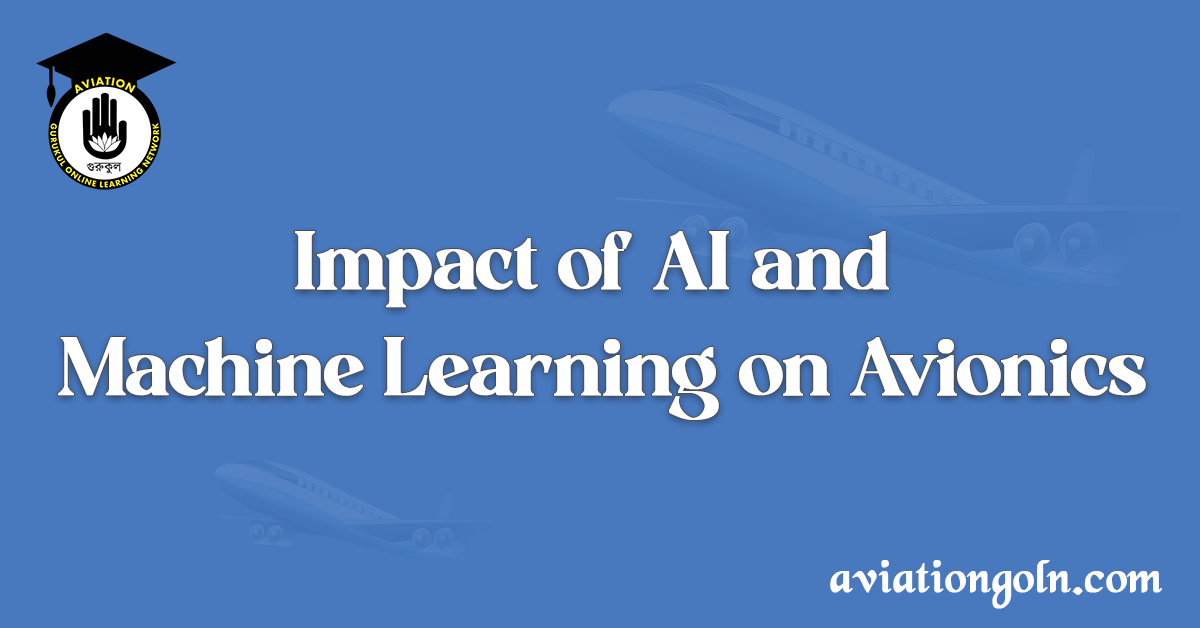Impact of AI and Machine Learning on Avionics, In recent years, Artificial Intelligence (AI) and Machine Learning (ML) have become buzzwords in multiple industries. But perhaps one of the sectors that stands to gain immensely from their evolution is avionics – the suite of electronic systems and devices used in aircraft, satellites, and spacecraft. The integration of AI and ML in avionics can significantly enhance operational capabilities, increase safety, reduce costs, and streamline processes.
In this article, we’ll delve into the significant impact AI and ML are having on avionics and discuss potential future implications.
Impact of AI and Machine Learning on Avionics

1. Introduction to AI and ML in Avionics
AI refers to the ability of a machine or system to mimic or simulate human intelligence processes, such as reasoning, learning, problem-solving, and decision-making. Machine Learning, a subset of AI, involves algorithms that allow systems to learn from and make decisions based on data without explicit programming.
When applied to avionics, these technologies promise to revolutionize the aviation industry by introducing automation and predictive functionalities, fostering innovation, and addressing previously unsolvable challenges.

2. Enhancing Flight Safety
AI and ML have profound implications for flight safety:
- Predictive Maintenance: Machine Learning algorithms analyze data from aircraft components to predict when parts might fail. By predicting and addressing maintenance needs before components break down, airlines can avoid unexpected delays and reduce the risk of in-flight equipment failures.
- Real-time Decision Assistance: Advanced AI models can assess vast amounts of real-time data quickly, assisting pilots in making informed decisions during complex or emergency situations.
- Automated Flight Systems: While pilots remain integral to aircraft operation, AI can take over routine tasks or assist in challenging flight conditions, reducing human error.

3. Improved Aircraft Efficiency
- Optimal Flight Paths: AI algorithms can analyze weather data, airspace restrictions, and other factors to calculate the most fuel-efficient route, saving airlines significant costs and reducing carbon emissions.
- Engine Efficiency: Machine Learning can optimize engine performance parameters for different flight phases, ensuring maximum efficiency.

4. Enhancing Air Traffic Management
Air traffic management stands to benefit enormously from AI integration:
- Traffic Flow: AI systems can predict air traffic flow and suggest optimal flight paths, reducing delays and ensuring smoother traffic management.
- Real-time Adaptations: Machine Learning models can adapt to changing scenarios, such as weather disruptions or emergencies, redirecting aircraft as needed.

5. Revolutionizing Pilot Training and Simulation
- Adaptive Training Modules: ML can customize training modules based on a trainee’s performance, strengths, and areas that need improvement.
- Virtual Reality (VR) and Augmented Reality (AR): Coupled with AI, VR and AR can provide hyper-realistic training scenarios, preparing pilots for real-world challenges without actual risks.

6. Enhancing Passenger Experience
AI integration isn’t only about aircraft operation. It’s also transforming the passenger experience:
- Personalized In-flight Entertainment: Using Machine Learning, entertainment systems can recommend content based on passenger preferences.
- Voice Assistants: AI-powered voice assistants can address passenger queries, control in-flight entertainment, and more.

7. Introducing Advanced Navigation Systems
- Terrain Analysis: AI systems can rapidly analyze terrain data, assisting pilots in unfamiliar terrains or during challenging landing scenarios.
- Predictive Weather Analysis: Machine Learning can predict short-term weather changes more accurately, assisting in navigation decisions.

8. Automating Ground Operations
AI is not limited to in-flight operations:
- Baggage Handling: AI-powered systems can optimize baggage handling processes, reducing errors and speeding up operations.
- Autonomous Ground Vehicles: AI-driven vehicles can handle tasks like aircraft towing, catering services, and more, streamlining processes and reducing costs.

9. Enhancing Cybersecurity
Modern aircraft generate and rely on vast amounts of data, making cybersecurity paramount:
- Threat Detection: AI can detect and respond to cyber threats in real-time, protecting aircraft systems from potential attacks.
- Continuous System Monitoring: Machine Learning algorithms can monitor avionic systems, detecting anomalies and potential vulnerabilities.

10. Challenges and Considerations
While the benefits are plentiful, integrating AI and ML in avionics isn’t without challenges:
- Safety Concerns: Ensuring AI algorithms make safe decisions in every possible scenario is crucial.
- Regulatory Hurdles: Aviation authorities worldwide must update regulations to address the complexities introduced by AI.
- Reliability and Testing: Ensuring the reliability of AI and ML models requires extensive testing, particularly in life-critical applications like aviation.

11. The Future: Autonomous Aircraft?
While fully autonomous commercial aircraft remain a contentious topic, AI’s advances have ignited discussions on the feasibility of pilotless planes. Such a future would rely heavily on AI’s ability to integrate all facets of flight operation seamlessly.

AI and Machine Learning’s integration into avionics signals a paradigm shift in aviation. From enhanced safety measures to improved operational efficiencies, these technologies promise a future where flights are safer, more efficient, and more passenger-friendly. However, as with any revolutionary change, it’s imperative to approach with caution, thorough testing, and a keen understanding of the potential challenges. Nonetheless, the horizon looks promising, with AI and ML set to be the co-pilots of the future.
